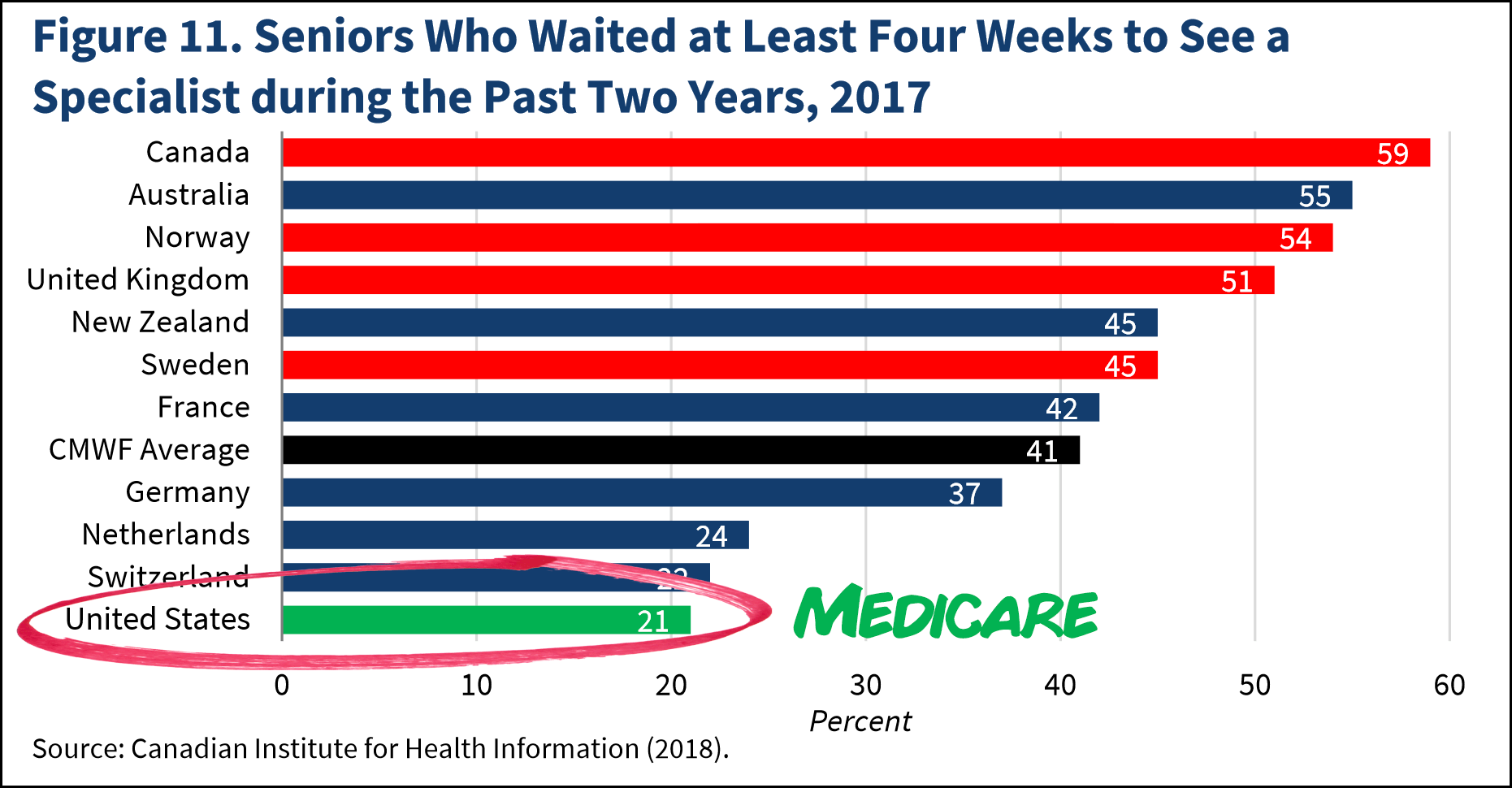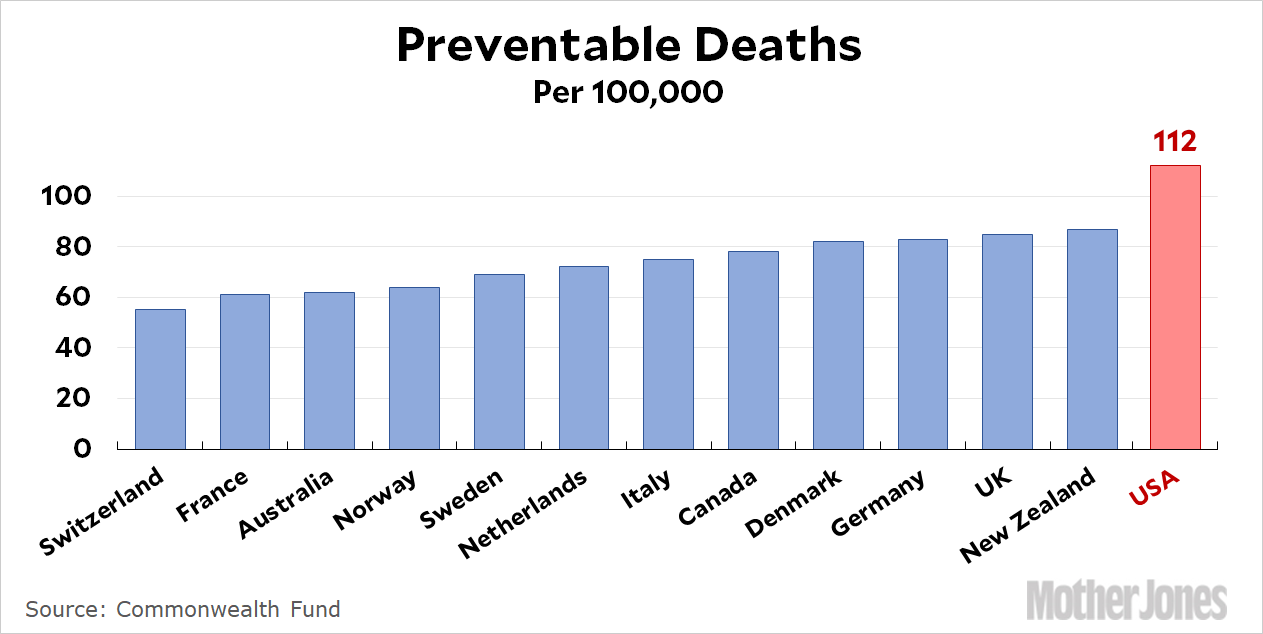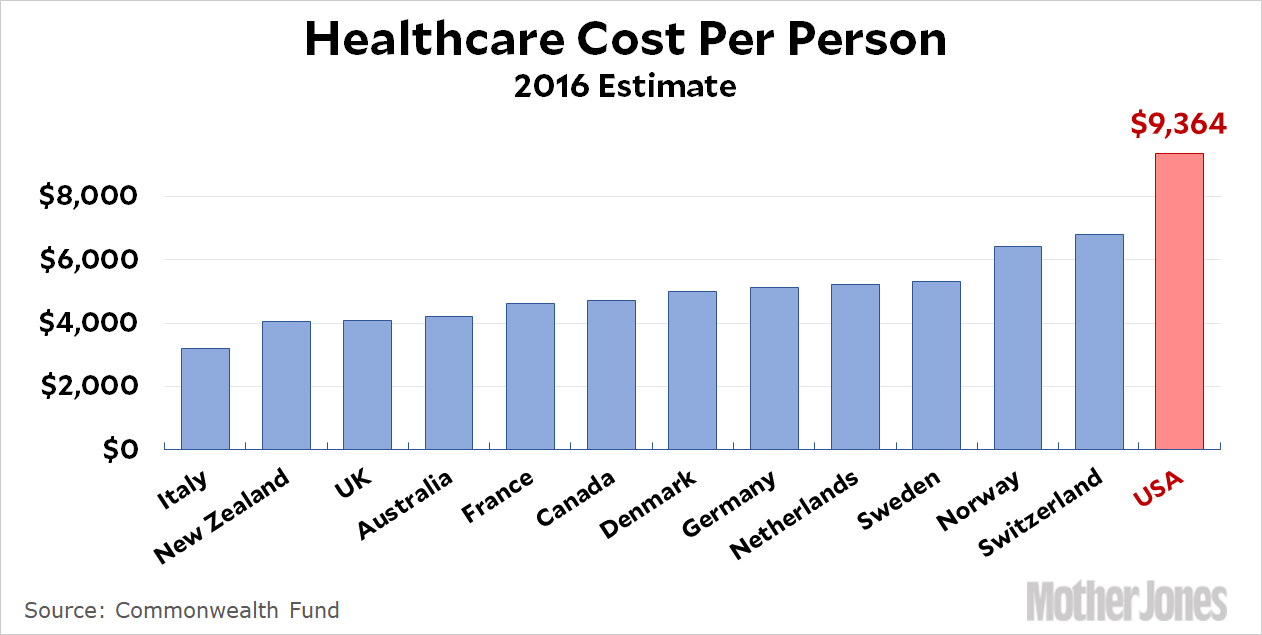The White House has released a booklet called “The Opportunity Costs of Socialism,” and it purports to show that wait times under socialist health care systems are far higher than they are in the good ol’ capitalist USA. However, as Sarah Kliff hilariously points out, the folks who put this together used data for senior citizens, all of whom are part of Medicare in the United States. And as we all know, Medicare is a socialist health care system:

This looks like a great case for Medicare for All! And while we’re on the subject, here are a couple of charts to show the opportunity costs of capitalism as well. First, our health care system kills an awful lot of people:

And we spend a helluva lot of money to kill them:

Since I am neither Donald Trump nor a Republican, I will add that there are lots of other measures of health care effectiveness, and the United States does very well on some of them. The truth is that all the health care systems in advanced countries have both good and bad points, and it’s actually pretty difficult to judge them on an overall basis. If you do, the US is usually in the top third or so, but not at the very top.
But there’s one thing we can say for sure: we really do spend a ton of money to maintain a health care system that’s (a) good but not great, (b) fantastically complicated, error-prone, and likely to overcharge, and (c) covers only about 90 percent of the country. I’m a capitalist, not a socialist, but like it or not, capitalism has its opportunity costs too.

















